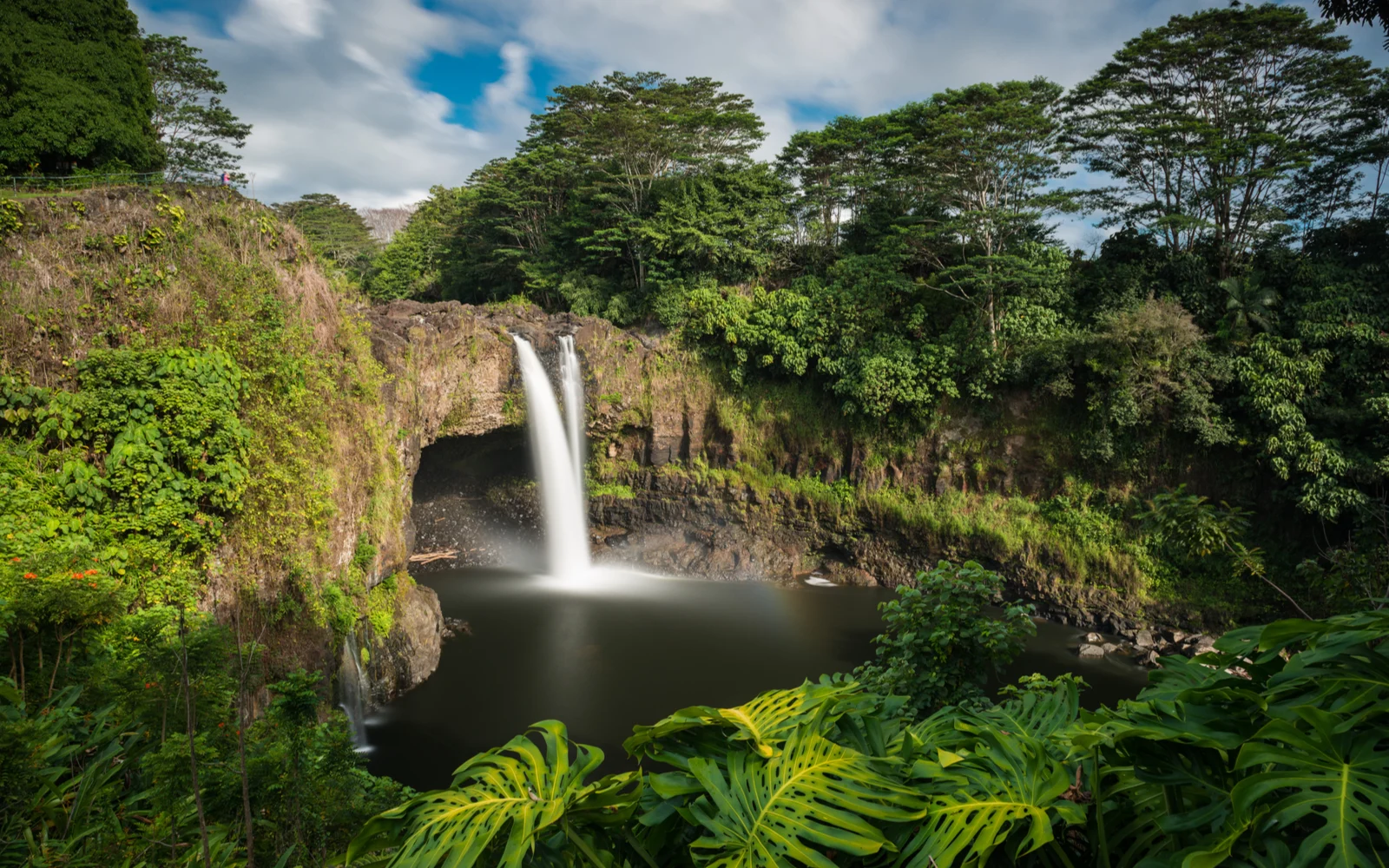What's the best time to visit the Big Island?
The best time to visit the Big Island of Hawaii is during the winter months of December to March, despite it being peak tourism season. This period offers ideal weather with temperatures around 79-80°F, minimal rainfall, and the island’s rainforests in full bloom.
While hotel and flight prices increase, the Big Island’s vastness prevents it from feeling overcrowded, and more affordable accommodations are still available compared to other Hawaiian islands.
The Hawaiian islands are home to unrivaled natural beauty, warm, tropical weather, and the spirit of ‘ohana (family). But the biggest – and maybe the best – island to visit is the island of Hawaii.
Also called the Big Island, this is one of the top destinations for travelers around the world in need of a sunny getaway with gorgeous scenery.
The time of year you go can make or break your visit, so it’s important to get familiar with the best (and worst) times to visit. Find out the best time to visit the Big Island for gorgeous weather, cheap flights and rooms, smaller crowds, and more in our quick travel guide.
We’ll also point out the worst time of year to go and share some helpful tips to make your trip unforgettable!
The Overall Best Time to Visit the Big Island
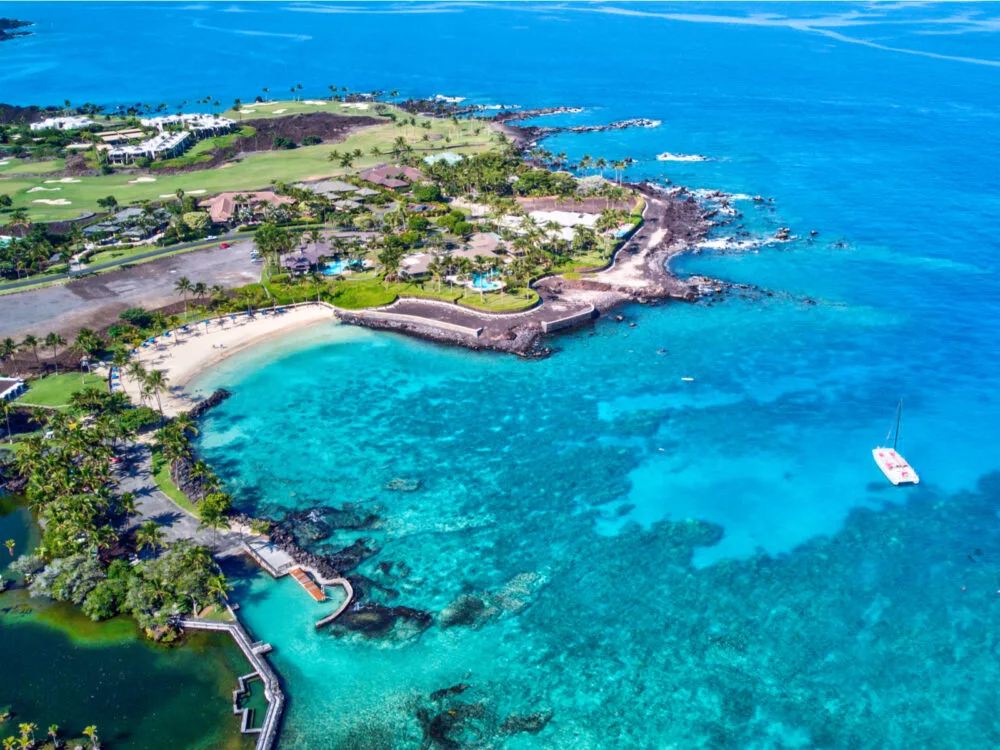
MGambill/Shutterstock
The best time to visit the Big Island of Hawaii is arguably December to March. Yes, it’s the peak tourism season when the most visitors arrive on the island, but hear us out! December to March – the winter months – are truly the best time of year to go.
The weather is absolutely ideal at this time of year, especially when you compare it with the cold, dreary winter weather in your town.
With daily temperatures around 79-80 degrees (lows around 64F), little rainfall, and the island’s lush rainforests in full bloom, there’s no better time to visit the Big Island than the dead of “winter.”
Hotel and flight prices do swing upward during the winter months because it’s such a popular destination for tourists.
But since the Big Island is so, well, big, you won’t feel crowded even during peak season. The Big Island also offers cheaper hotel rates than the other popular Hawaiian islands, so you can still nab an affordable room (less than $200/night), even during high season.
- December to March – peak season for a reason
- Sunny, 80 degrees on average, little rainfall
- Prices are slightly higher, but still affordable
- Ideal surfing conditions + humpback whale-watching
Cheapest Time to Visit the Big Island
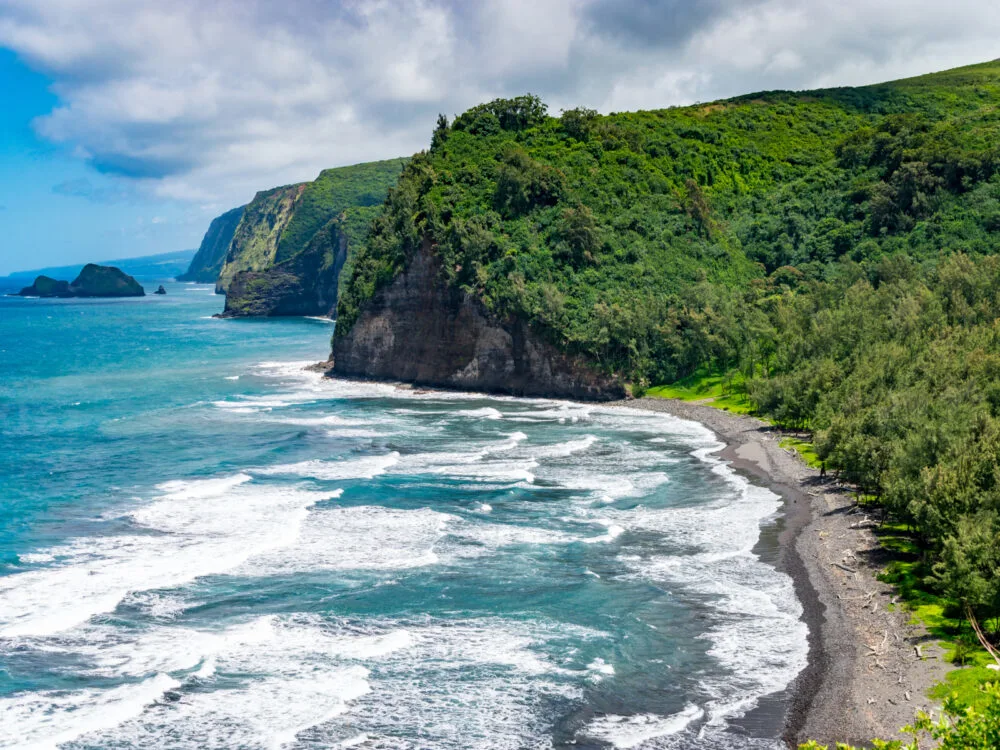
Milan Van Weelden/Shutterstock
The cheapest time to visit the Big Island is from September to November. These fall months see a major decrease in visitors, so prices tumble as a result.
You can score flights, hotels, car rentals, and tickets to attractions for a fraction of the peak season price during the fall! Prices on the Big Island tend to be lower than the other Hawaiian islands to begin with.
And from September to November, those prices drop even further and package deals abound to encourage visitors to come during the low season.
You could pay as much as 50% less for rooms, rentals, and flights when you go at this time of year. The weather is really nice in September and October with little rainfall, highs in the low 80s, and lows in the upper 60s.
During November, the rainiest month of the year, you may score rock-bottom pricing on flights, hotels, and attractions – but you might want to plan some indoor activities to get out of the rain.
- September to November – the fall price dip
- Fewer tourists mean cheaper rates on flights/rooms
- Discounts on rentals and attractions
- More package deals available
Least Busy Time to Visit the Big Island
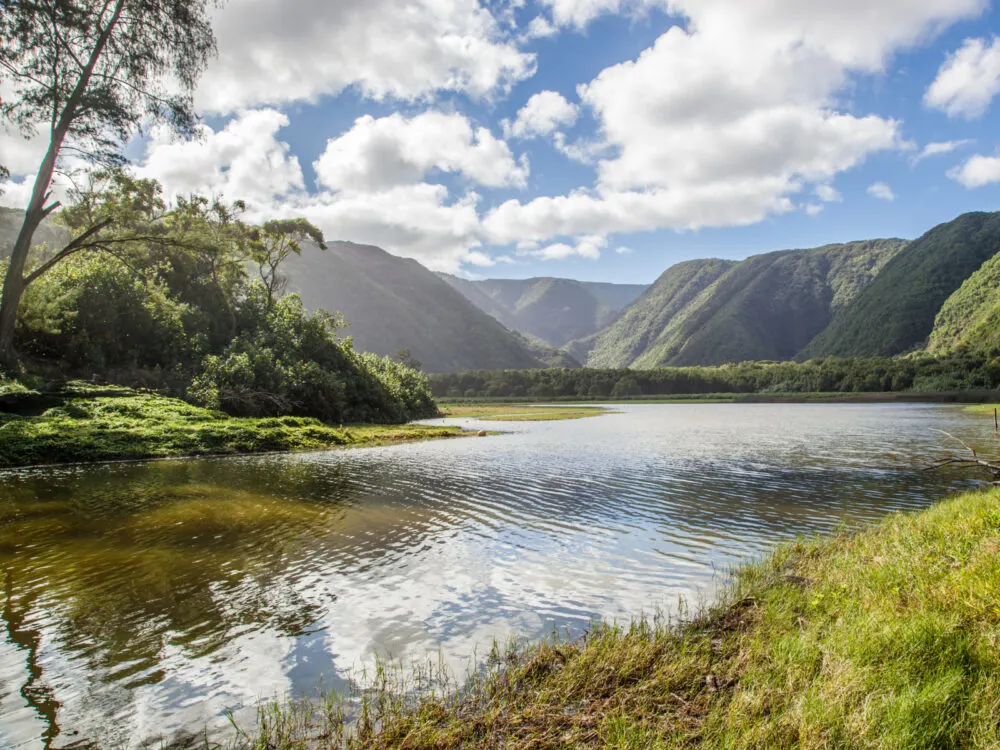
Radoslaw Lecyk/Shutterstock
The least busy time to visit the Big Island is in May and from September to November. The month of September sees the lowest number of visitors of the entire year, so if you want to feel like you’ve got this big ol’ island to yourself, September is the time to go.
After the peak winter season from December to March, visitors dwindle down to one of their lowest points by the month of May. May is a great time to go to experience highs in the 80s and lows in the mid-60s with very little rainfall to ruin your plans.
After an uptick in tourism during the summer months, visitors slow back down during the months of September to November before Hawaii heads back into the peak winter season.
September sees the lowest number of visitors of the entire year, with an average of 102,600 hitting the Big Island’s shores (compared to 175,700 in March).
If you’re serious about avoiding crowds, book your trip during the month of May or September and pretend it’s your own private island. You’ll love the shorter lines and wait times at shops and restaurants, perfect weather, and lower prices at these times of year.
- May and September to November – the fewest crowds
- More hotel/flight/rental car availability
- Shorter lines and wait times at restaurants and attractions
- Lower rates on rooms, rentals, and flights
Worst Time to Visit the Big Island
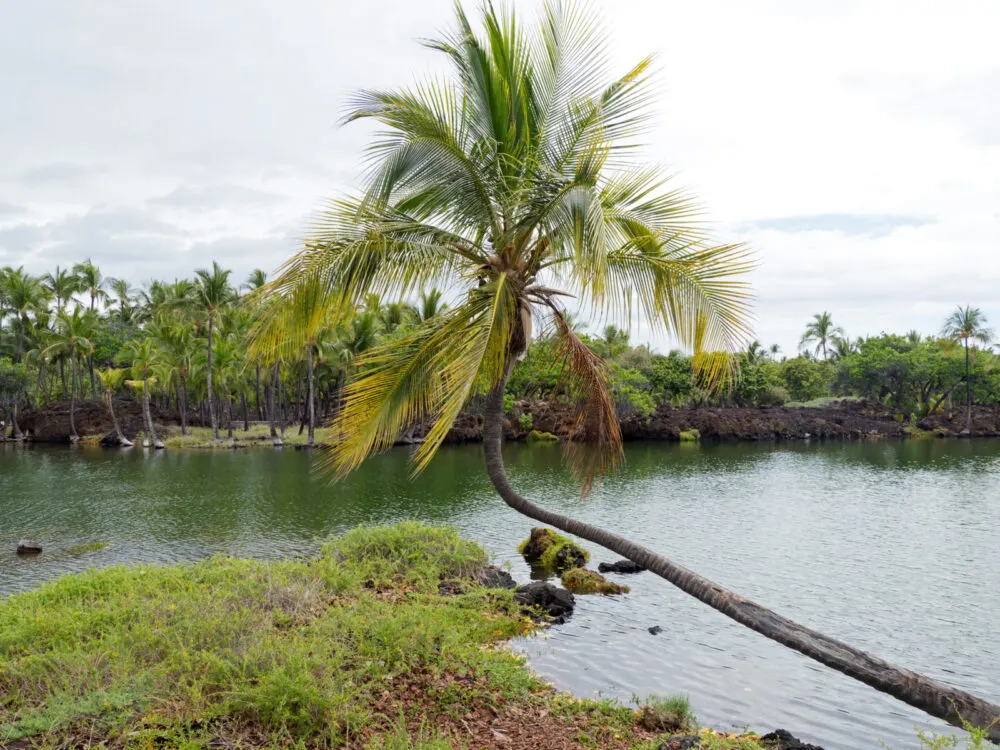
Boykov/Shutterstock
When you’re talking about visiting literal paradise, it’s hard to imagine that there could be a bad time to go. But if you want the ideal weather, lowest prices, or fewest crowds, the timing of your trip is important.
Find out the worst time to go to the Big Island depending on your goals for the trip below.
- If you’re seeking ideal weather, the worst time to visit the Big Island is during November. This is the rainiest month of the year on the island and one of the hotter months of the year with average temperatures around 80. You’ll want to have some indoor activities lined up if you decide to visit during the month of November – plan on going from December to March if you want truly ideal weather!
- If you’re seeking the cheapest prices, the worst time to visit is December to March. This is peak tourism season for Hawaii as snowbirds leave their cold, dreary cities in favor of a warm, Hawaiian vacation. Prices skyrocket in response, so you’ll pay a lot more for flights and rooms at this time of year. Plan your visit during September, October, or November for a more affordable trip.
- If you’re seeking smaller crowds, the worst time to visit is winter (December to March) and the summer months (June to August). More visitors make their way to the Big Island during these periods to escape the winter cold or have a tropical vacation while the kids are out of school. Plan your visit during May or September to November for smaller crowds.
Things to Consider
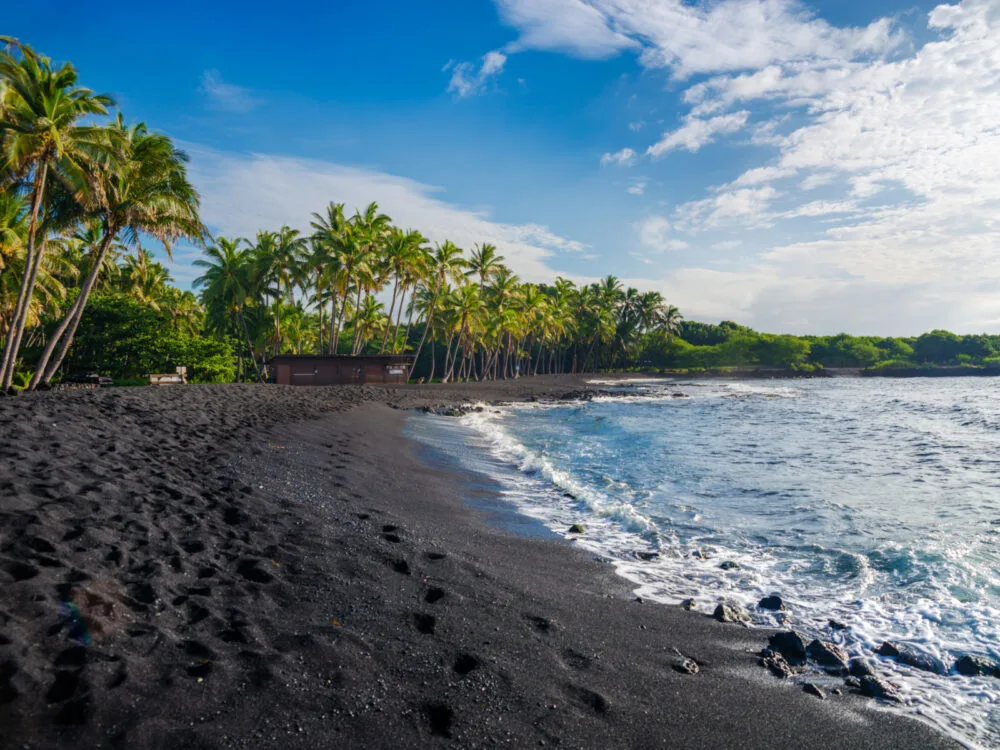
Alexander Demyanenko/Shutterstock
Now that you know the best time to visit the Big Island, take a look at a few more things to consider to make your vacation ideal.
- Get the best of both worlds during the “little” high season. From June to August, the Big Island is in the “little” high season. The number of visitors arriving swells, but not as much as during the true peak season of December to March. Prices are more affordable than the winter months and the weather is nearly perfect with highs in the low 80s and lows in the upper 60s each day. You can get the best of both worlds – pricing/crowds and weather – when you visit during the little high season!
- Don’t shy away from more crowded months. Although peak season is enough to send some travelers packing, on the Big Island, increased tourist numbers are no big deal. The island is so big (4,000+ square miles) that hotels, resorts, and beaches are spread out and don’t feel overcrowded. Even during peak season! If you have the opportunity to go during the peak winter months, take it. You won’t feel crowded and you’ll get to experience the best weather.
- Choose the side you stay on carefully. The western side of the Big Island (Kailau-Kona) is the busiest, even during the low season. There’s a lot to do on this side of the island and tons of shops, restaurants, and hotel options. Check out the eastern side of the island (Hilo) or the north side (Waimea) for a more laid-back vibe and fewer crowds, year-round.
- Check for volcano safety updates before you travel. One of the biggest claims to fame for the Big Island are the active volcanoes in the Hawaii Volcanoes National Park. While the vast majority of the island is safely tucked away from volcanic danger, it’s still wise to check up on the latest volcano updates for the island when you’re planning to visit.
- Rent a 4-wheel drive vehicle to tour the island. As the biggest Hawaiian island, there’s a lot to see on Hawaii and it can’t all be done on foot. Rent a 4-wheel drive vehicle to drive the 19-mile Chain of Craters Road on the eastern side, explore unpaved roads that snake through the island, and access the rougher – but gorgeous – green and black sand beaches, rainforests, and lava flows down on the southern side of the island (Ka’u district).
Keeping these tips in mind will help you make the most of your trip to Hawaii, the Big Island.
So, What’s the Best Time to Visit the Big Island Overall?
If you want to plan the ideal Hawaiian vacation, the best time to visit the Big Island is during the winter from December to March. Visitors peak at this time of year because the weather is idyllic, sunny, and warm.
If you’re trying to avoid any hidden weather, pricing, or crowd pitfalls, avoid the months of November (rainiest month of the year), December to March (busiest and highest priced months of the year), and June to August (the little high season of summer).
That leaves you with April, May, September, and October as the absolute best times to visit the Big Island.
And truthfully, anytime you go – even if it’s the dead center of peak season – you’re going to have a blast exploring the island’s natural beauty and enjoying the attractions, shops, and restaurants around.



